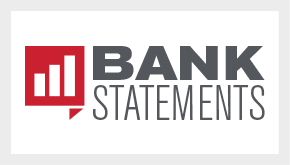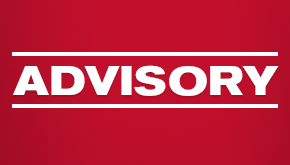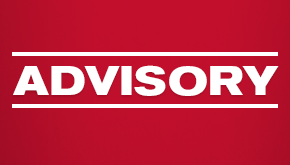DOL Finalizes Changes to Qualified Professional Asset Manager Exemption 84-14
Highlights
- The Department of Labor (DOL) issued new amendments to the popular Prohibited Transaction Class Exemption 84-14 (QPAM Exemption) on April 2, 2024. The new rules will go into effect on June 17, 2024.
- The DOL also raised the equity and assets under management thresholds to qualify as a “qualified professional asset manager” which will be phased in over the next six years. These could prove burdensome for smaller investment managers.
- The DOL has scaled back its original proposal in these final rules, but there will be registration and recordkeeping requirements on investment advisers if they wish to rely on the QPAM Exemption in the future.
- Asset managers of pooled funds or accounts have historically often relied on the QPAM Exemption. These usually impact SEC-registered investment advisers, though this could also impact managers relying upon various exemptions under the Investment Advisers Act and the Investment Company Act.
On April 2, 2024, the DOL issued final amendments to the QPAM Exemption. The QPAM Exemption has been relied on for nearly 40 years by investment managers to manage “plan assets” subject to the Employee Retirement Income Security Act of 1974 (ERISA) because of the broad relief the QPAM Exemption provides to permit transactions with a “party in interest” that would have otherwise been prohibited under ERISA.
The new QPAM rules will take effect on June 17, 2024, and the published changes to the QPAM Exemption will require investment managers relying on the QPAM Exemption to comply with the additional conditions. If the conditions are not or cannot be met, investment managers may need to find another exemption to apply to their transaction or request an individual exemption from the DOL.
Below is a summary of the material changes made to the QPAM Exemption.
Equity and Assets Under Management Qualifications
Currently, a bank, savings and loan association, insurance company or registered investment adviser (RIA) needs to have $1 million in shareholders’ or partners’ equity and $85 million in assets under management as of the end of its taxable year to qualify as a qualified professional asset manager (QPAM).
Under the new rules, the equity threshold has been increased to $2,040,000 for RIAs and $2,720,000 for banks, savings and loans and insurance companies, and the assets under management threshold has been increased to $135,870,000. The DOL has determined that such amounts will be phased in in three-year increments beginning in 2024 and ending in 2030. For the fiscal year ending no later than Dec. 31, 2024, banks, savings and loans, and insurance companies will need equity capital of $1,570,300 and $2,720,000 for the fiscal year ending Dec. 31, 2030. For registered investment advisers, the equity threshold is $1,346,000 for the fiscal year ending no later than Dec. 31, 2024; $1,694,000 for the fiscal year ending no later than Dec. 31, 2027; and $2,040,000 for the fiscal year ending no later than Dec. 31, 2030. The assets under management threshold also increases to $101,956,000, $118,912,000 and $135,868,000 respectively.
The DOL noted that it understands this may make it harder for smaller managers to use the QPAM Exemption but stated that “the QPAM Exemption was never intended for small investment managers, and the exemption’s minimum asset and equity thresholds are intended to ensure that the fiduciaries managing Plan assets are established institutions that are large enough not to be unduly influenced in their discretionary decision-making process by Parties in Interest.”
Registration of QPAM Status with the DOL
The DOL proposed a new condition on QPAMs requiring email notification to the DOL of its legal name and its reliance on the QPAM Exemption. The final rules adopted the reporting requirement but provided QPAMs a 90-day period to report and an additional 90-day period to cure a failure to report. However, if the QPAM uses the 90-day cure period, it will be required to submit an explanation as to why it failed to provide timely notice. The notification only needs to be provided once, unless the QPAM’s name changes, and a list of all QPAMs will be displayed on the DOL’s website. Existing QPAMs that want to continue to rely on the QPAM Exemption will have until Sept. 15, 2024 (i.e., 90 days after the rule becomes final on June 17, 2024) to register.
Changes to QPAM Ineligible Status
The DOL has finalized a list of crimes that will disqualify an entity from becoming a QPAM if convicted. Such crimes include crimes committed outside the United States that are substantially similar to the crimes the DOL listed in the QPAM Exemption. In addition, the DOL also created a “Prohibited Misconduct” category if the QPAM enters into domestic non-prosecution or deferred prosecution agreements (NPA or DPA). If a QPAM becomes ineligible, then it must inform the DOL within 30 days.
The DOL finalized a one-year wind-down period when a QPAM becomes ineligible. During this period, the existing QPAM could continue to rely on the QPAM Exemption for existing transactions, but no new transactions would be covered. The DOL stressed that the one-year period is there for the benefit of the ERISA plan client to wind down its relationship with the QPAM, if it chooses to do so, and settle all current affairs, in addition to finding a new QPAM to transition the account. In general, a QPAM that becomes ineligible will not be able to rely on the QPAM Exemption for 10 years.
The DOL stated in the final rules that the ineligibility rules under the QPAM Exemption will not be applied retroactively and will only apply to conduct that occurs after the new rules become final. In addition, the DOL expressed that investment advisers may always apply for an individual exemption if they cannot meet all the qualifications under the amended QPAM Exemption.
Lastly, the DOL withdrew its proposed requirement that management agreements contain terms that would apply if the QPAM becomes ineligible. Rather, the DOL limited the revision of management agreements to those QPAMs that become ineligible for the exemption after the new rules take effect. In that event, management agreements would need to allow the ERISA client to withdraw from its arrangement with the QPAM without fees or penalties. In addition, the QPAM is required to indemnify the ERISA plan client and restore any losses incurred by such client due to its actions which caused the QPAM to become ineligible.
QPAM Involvement in Investment Decisions
In the proposed rule, the DOL reasserted the QPAM Exemption’s requirement that the QPAM needs to be the sole arbiter on investment decisions related to a proposed transaction. The DOL noted skepticism of QPAMs being provided terms and conditions by “parties in interest” prior to the QPAM’s involvement in a transaction, and then the QPAM being pressured to approve the transaction with reliance on the QPAM Exemption. In the final rule, the DOL reasserted the necessity of the QPAM to be the ultimate decision-maker on investment decisions regarding assets under its management. The final rule uses language that requires the QPAM to have sole responsibility for the approval of the transaction, stating that the QPAM must retain sole authority with respect to planning, negotiating and initiating the transactions covered by the QPAM Exemption.
The DOL has also clarified certain language in the proposed rule requiring that the relief provided under the QPAM Exemption only apply “in connection with an Investment Fund that is established primarily for investment purposes.” The DOL noted that “a fund that contains only a minor investment component would not be eligible for the relief provided by the QPAM Exemption” and “if a Plan has mixed-use purposes, the Plan sponsor should establish a separate account for any investments held directly by the Plan in order to rely upon the QPAM Exemption for that portion of the Plan’s assets.” However, the DOL did state that “an Investment Fund that makes distributions and/or engages in other activities that are ancillary to the fund’s primary investment purpose will not fail to be an Investment Fund established primarily for investment purposes.”
Recordkeeping
The final rule also solidified the DOL’s requirement to have compliance records related to the QPAM Exemption maintained by the QPAM for six years. The DOL believes that this position is consistent with other recordkeeping obligations in other DOL-issued prohibited transaction exemptions.
Conclusion
For the first time in more than a decade, the DOL has made changes to the QPAM Exemption. These changes, while not as broad as in the proposed rule, will undoubtedly have an impact on certain investment managers and their ability and willingness to rely on the QPAM Exemption going forward. Larger investment managers that currently rely on the QPAM Exemption will most likely continue to rely on it going forward provided no criminal convictions or prohibited conduct occurs. Smaller investment managers, with the increased equity and asset management thresholds, may need to look to other exemptions to manage ERISA plan assets because they will no longer be able to qualify as a QPAM. For example, the so-called “service provider exemption,” which is a statutory exemption, may be a viable alternative in certain transactions between a plan and a “party in interest” and result in fewer hurdles for investment advisers. However, without outside counsel support, there is little guidance for this exemption which may cause an investment manager to shy away from its reliability and opt to avoid managing ERISA plan assets.
The new rules will take effect on June 17, 2024, and investment advisers will need to prepare for these new changes if they intend to rely on the QPAM Exemption when entering into transactions on behalf of their ERISA clients. If you have any questions regarding the new rules, please contact your regular AT lawyer or one of the listed authors.


































